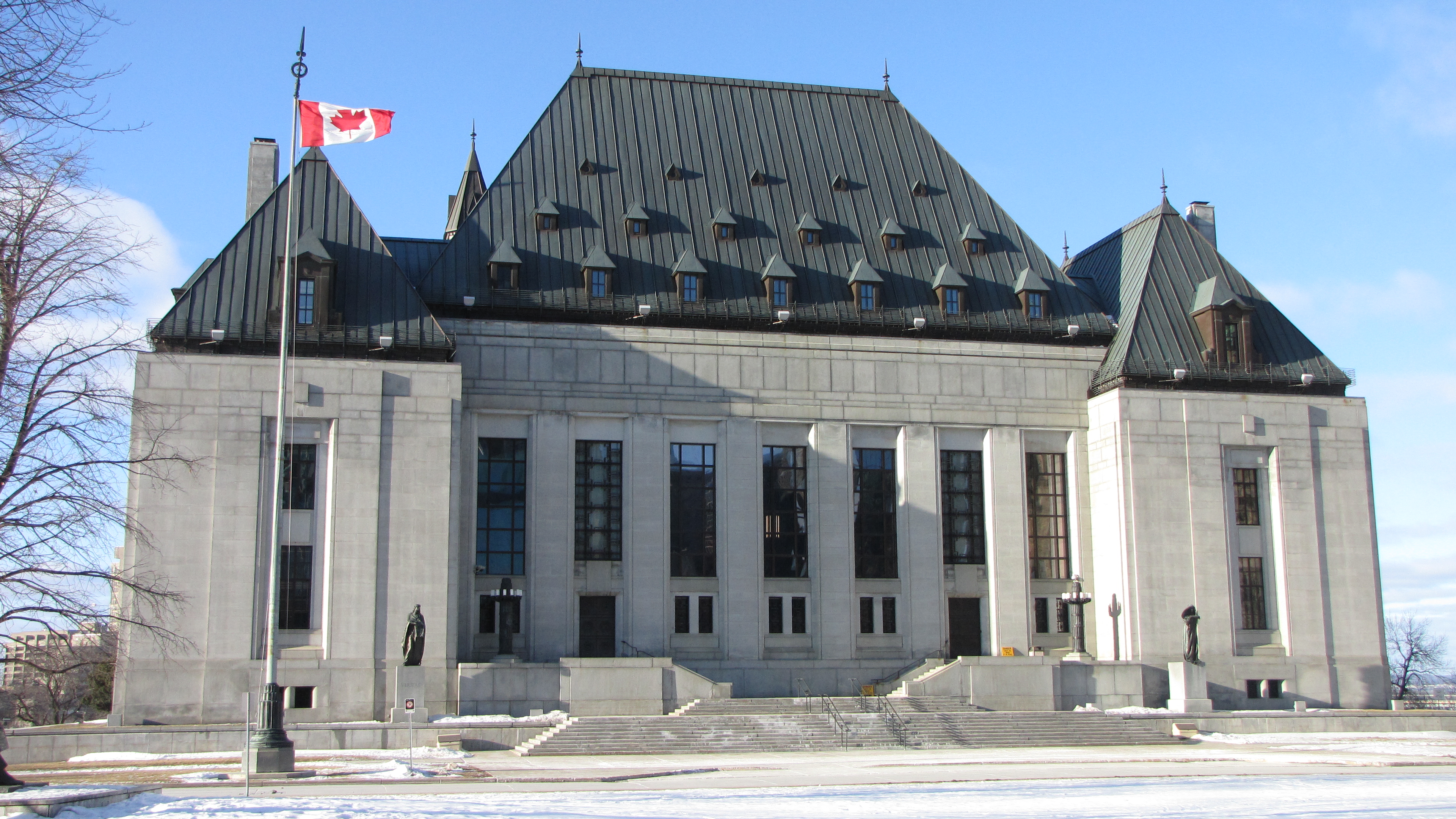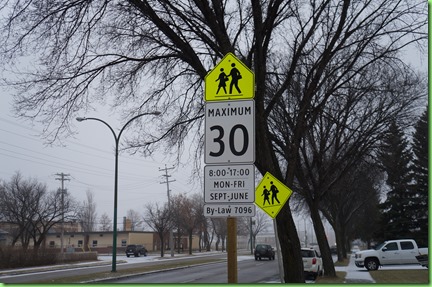Sometimes it is easy to pick a side in a debate, one side is so clearly wrong that one can easily point out the problems and holes in their logic. Some debates are black and white.
Others are so many shades of grey. There are nuances that few tend to see, and as you start to peel away the layers of the onion, one problem after another starts to appear. Sometimes, a decision seems like the right one, but starts you down a slippery slope that you only realize has happened once you’re halfway down the damn thing.
Sometimes there is just no fair answer.
I fear that this is the problem we face when we deal with religious rights and what is known as reasonable accommodation. It is a laudable goal to respect a person’s religious rights and to make reasonable adjustments when those rights seem to go against what others may consider normal practice. The problem of course becomes – What is reasonable?
I fear we have hit that wall on the issue of religious articles of clothing such as the Niqab and the Hijab.
 Justin Trudeau made a speech at McGill University on Monday night on the politics of fear that is being practiced by the current government of Prime Minister Harper and the Conservatives. He is right, the bills introduced of late by the Conservatives have often been about stoking the fear of Canadians and using that fear to sell a law and order agenda that frankly is unneeded, and by most reasonable people’s interpretations, would go against the Charter. For much of his speech, I am in wholehearted agreement with him.
Justin Trudeau made a speech at McGill University on Monday night on the politics of fear that is being practiced by the current government of Prime Minister Harper and the Conservatives. He is right, the bills introduced of late by the Conservatives have often been about stoking the fear of Canadians and using that fear to sell a law and order agenda that frankly is unneeded, and by most reasonable people’s interpretations, would go against the Charter. For much of his speech, I am in wholehearted agreement with him.
However, during his speech he commented on the topic of religious face and head coverings. He referred to a recent court decision that said that it goes against the Charter to ask a religious person to not cover their face with a Niqab during a citizenship ceremony. He also brought up a recent case where a Muslim woman was denied a court hearing in Quebec because she would not remove her Hijab.
Firstly, I do not think it unreasonable to expect a person to show their face when taking an oath of citizenship. To be able to see one’s face, to be able to see that the person taking the oath is the one that is supposed to take the oath is not an unreasonable request. Even the Charter uses the term reasonable.
Guarantee of Rights and Freedoms
1. The Canadian Charter of Rights and Freedoms guarantees the rights and freedoms set out in it subject only to such reasonable limits prescribed by law as can be demonstrably justified in a free and democratic society.
The second problem I see here, and perhaps those of us that are secular humanists and atheists see this differently than the general population, is that sometimes religion gets an extra set of rules that it gets to play with. Case in point, the court in Quebec that denied a Hijab wearing woman her day in court.
Now let me be clear, my gut feeling on this is that the judge most likely was coming at this from a position of bigotry. I have a feeling that there are many people who came into said courtroom in the past, wearing religious headgear of some other religion, and this judge took no issue. I suspect that that is the case. There is no way for me to know at this moment, but I suspect that that has happened in the past. If religious headgear or symbols have been allowed in that courtroom before, and if the judge allows people to swear on the Bible or the Koran, then the claim of that court being secular is total bunk. I suspect that that is the case. I have that feeling.
But lets pretend that the judge does run the courtroom in a secular manner; just for argument’s sake. Lets say that everyone in that courtroom affirms that they will tell the truth with a secular oath. With that established, lets say that the judge asks the woman to please remove her Hijab as a sign of respect for the secular courtroom. Is that unreasonable? I’m not going to answer that.
I would actually put it a different way. If we as a society think that it is wrong to make that woman remove her head covering because it goes against her deeply held religious beliefs, then are we obligated to honour those feeling? Before we answer that, another situation.
 Robert is a hypothetical individual. Rob is an obsessive fan of the Montreal Canadiens. In 1993, he was wearing the cap of his favourite team and for some reason he never took it off outside his house that year. The team went all the way, won the cup. From that point on, every year the Habs make the playoffs, Rob wears his hat. It’s his good luck charm, and despite them not winning the Cup since, Rob truly believes that wearing his cap makes a difference. It is a deeply held, personal belief. I can judge it, I can think it’s a ridiculous belief; but it is his belief and he has every right to have it.
Robert is a hypothetical individual. Rob is an obsessive fan of the Montreal Canadiens. In 1993, he was wearing the cap of his favourite team and for some reason he never took it off outside his house that year. The team went all the way, won the cup. From that point on, every year the Habs make the playoffs, Rob wears his hat. It’s his good luck charm, and despite them not winning the Cup since, Rob truly believes that wearing his cap makes a difference. It is a deeply held, personal belief. I can judge it, I can think it’s a ridiculous belief; but it is his belief and he has every right to have it.
So, one day Rob lets his son borrow the car, and the car gets impounded. Rob goes to court to get his car back. The judge refuses to hear the case because Rob refuses to remove his hat. Rob gets kicked out of court.
How is this not the same thing?
Both “Rob the sports fanatic” and the woman wearing the Hijab are doing the same thing, refusing to remove an article of clothing that they have a strong belief that they have to wear when they are out in public. The fact that Rob’s belief is not based in a religion does not make it any more or any less valid. All that matters is that he has a deeply held personal belief and that going against that belief will cause him deep personal angst.
As an atheist, I cannot see Rob’s situation as any less or as any more than that of the woman wearing the Hijab. I have seen many people comment that a baseball cap is not the same as a religious headpiece? I would ask who are they to make that judgement on behalf of the person wearing said non-religious headpiece. If the religious person gets to wear their head covering, then everyone gets to wear their head covering as they see fit. To do otherwise is religious discrimination against those that do not hold said religion. It gives special treatment to those who claim a religious exception over those that live a secular existence.
It would seem that I have Mr. Trudeau on my side.
“For me, this is both unconscionable and a real threat to Canadian Liberty. For me, it is basic truth that Prime Ministers of liberal democracies ought not to be in the business of telling women what they can and cannot wear on their head during public ceremonies.”
I would hope he’d be just as fervent in Rob’s defense.
 This morning, Eve Adams, the Member of Parliament for Mississauga-Brampton South crossed the floor from the Conservatives to join the Liberal Caucus under Justin Trudeau. Now, I have no idea what kind of MP Ms. Adams is, although I have heard that she has had questionable dealings in and with her former party during the nomination processes in her former and neighbouring ridings. Apparently she broke some party rules, however from past experience I know that that can be a murky mess too. Brandon-Souris had its own nomination irregularities in the last by-election which still seem questionable to me. But that’s another topic.
This morning, Eve Adams, the Member of Parliament for Mississauga-Brampton South crossed the floor from the Conservatives to join the Liberal Caucus under Justin Trudeau. Now, I have no idea what kind of MP Ms. Adams is, although I have heard that she has had questionable dealings in and with her former party during the nomination processes in her former and neighbouring ridings. Apparently she broke some party rules, however from past experience I know that that can be a murky mess too. Brandon-Souris had its own nomination irregularities in the last by-election which still seem questionable to me. But that’s another topic.
 In 1994 Walmart announced that it was entering the Canadian market, it did so with the announcement that it was buying the discount chain Woolco, not just the leases, but retaining most of the company assets including employees and other infrastructure across the country. They modestly renovated the Woolco locations while remaining open, the biggest changes being replacing the cafeterias with McDonald’s locations. Walmart went on to become the dominant retailer in Canada.
In 1994 Walmart announced that it was entering the Canadian market, it did so with the announcement that it was buying the discount chain Woolco, not just the leases, but retaining most of the company assets including employees and other infrastructure across the country. They modestly renovated the Woolco locations while remaining open, the biggest changes being replacing the cafeterias with McDonald’s locations. Walmart went on to become the dominant retailer in Canada.


